A team of German and Armenian researchers made a groundbreaking discovery last week: an ancient church dating back to the 4th century that would be the oldest documented temple in Armenia, considered the world’s first Christian nation.
In statements given to CNA – EWTN News’ English agency – the co-directors of the project, Achim Lichtenberger and Torben Schreiber, from the University of Münster; and Hayk Gyulamiryan, from the Armenian Academy of Sciences; They explained the importance of the discovery at the site of the ancient city of Artaxata. The fourth co-director of the project, Mkrtich H. Zardaryan, could not be reached at the time of publication.
Receive the main news from ACI Prensa by WhatsApp and Telegram
It is increasingly difficult to see Catholic news on social media. Subscribe to our free channels today:
Historical roots of Christianity in Armenia
“Being the first country to adopt Christianity at the state level, and where the apostles Thaddeus and Bartholomew preached Christianity at the beginning of the 1st century, this discovery is a very important fact for Armenians,” Gyulamiryan told CNA, adding that “ The finds are among the most important in Armenia in recent decades.”
Lichtenberger also highlighted the particular importance of the site, as the church was discovered near the Khor Virap monastery, where Gregory I the Illuminator was imprisoned before converting the Armenian king Tiridates III to Christianity in the 4th century.
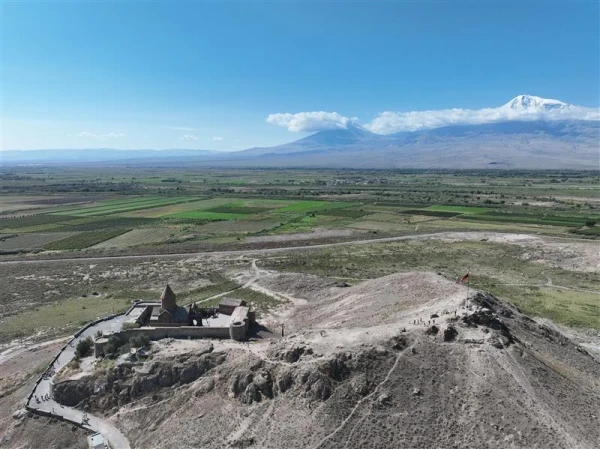
As Gyulamiryan noted, although the roots of Christianity in Armenia can be traced back to the time of the apostles, it was not until the year 301 that Christianity was proclaimed as the official religion of Armenia.
According to tradition, the conversion of Armenia is attributed to Saint Gregory I the Illuminator, a Christian evangelist and convert from Zoroastrianism, who miraculously cured the nation’s pagan king of a strange “disease,” after no other pagan priest could do so. .
The widely accepted story of how Armenia converted to Christianity comes from a mythical story promoted by author Agathangelos in the 5th century, the Armenian researcher explained.
According to legend, the pagan king of Armenia was fascinated by the beauty of Saint Hripsime, a nun who had fled with her abbess and her community from persecution in Rome. The king offered to marry her and make her queen, but Hripsime refused and was able to reject the king’s claims with miraculous strength.
After the king finally ordered the death of Hripsime and his community, historians claim that he was “turned into a wild boar that tore his own flesh” and could not be cured by any pagan or Zoroastrian priests who attempted to heal him.
Finally, the king’s sister persuaded him to appeal to Saint Gregory, whom the king had imprisoned for the past 15 years. Once Saint Gregory was freed, he cured the king of his “illness” and converted him and the entire royal family to the Christian faith.
Artaxata, where these events are believed to have occurred, is “an important site related to early Christianity in Armenia,” Lichtenberger told CNA.
Saint Gregory is venerated in both the Armenian Orthodox Apostolic Church and the tradition of the Catholic Church. In 2005, Pope John Paul II erected a 5.8-meter statue of Saint Gregory in the north courtyard of St. Peter’s Basilica in Vatican City.
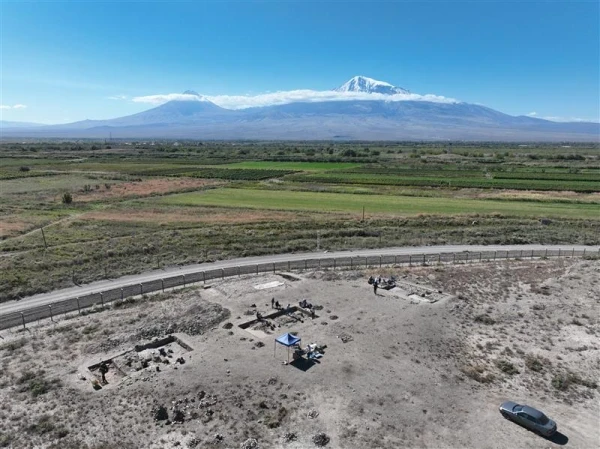
The discovery
The newly discovered church is approximately 30 meters long and is octagon-shaped, with “cruciform annexes oriented east-west and north-south,” according to Lichtenberger, who noted the discovery of a similar structure from a slightly later period in Abkhazia. (Sevastopol).
Although the Artaxata site had already been discovered, Lichtenberger explained to CNA that the church was buried and was not discovered until the team conducted its magnetic surveys and excavations last spring.
Researchers confirmed in September that the church dates to around 350 AD, using radiocarbon dating techniques on a series of samples taken from a wooden platform that belonged to the building’s original construction.
Before this year’s fall excavations, Gyulamiryan told CNA that he remembered thinking that the team “must confidently unearth the next chapter of Armenia’s history.”
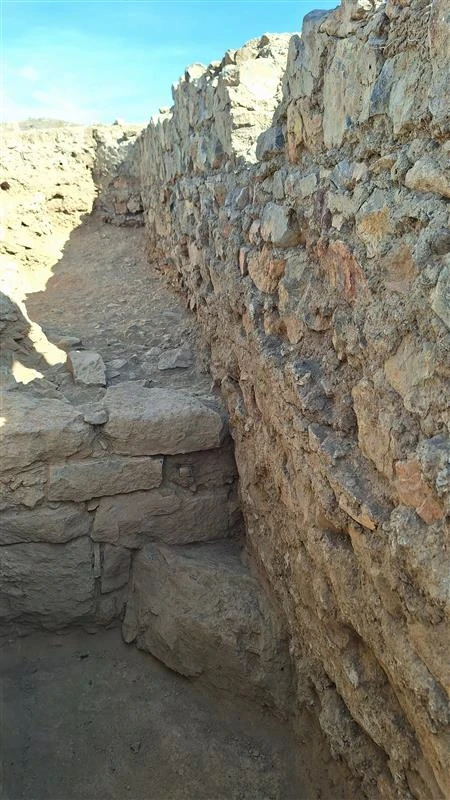
According to Lichtenberger, the radiocarbon date of the wood samples coincided with ceramic fragments also found inside the church and with “the overall construction technique of the building, which used large amounts of mortar.”
“In the center of the church we found large amounts of marble decoration that suggest that this part was prominently decorated,” he highlighted. Curiously, the German researcher noted that the state of the building, when discovered, indicated that it may have met a hostile end.
“The building was badly destroyed (perhaps intentionally),” he wrote, “the marble construction was smashed, parts of the floor tiles were removed, the roof was set on fire and everything was buried in a large collapse of burnt tiles and beams.”
However, according to Lichtenberger, there are no primary literary sources that correspond to the church, since “the literary sources only refer to a 7th century church in Artaxata.”
By contrast, while Armenian literary tradition holds that the oldest church in the country is the Etchmiadzin Cathedral, Lichtenberger noted that “archaeological evidence for this site does not date to the mid-4th century AD.”
“This does not mean that Etchmiadzin is younger than the Artaxata church, it just means that the Artaxata church provides older archaeological evidence,” he added. “Therefore, we assume that the Artaxata church is the oldest archaeologically documented church in Armenia.”
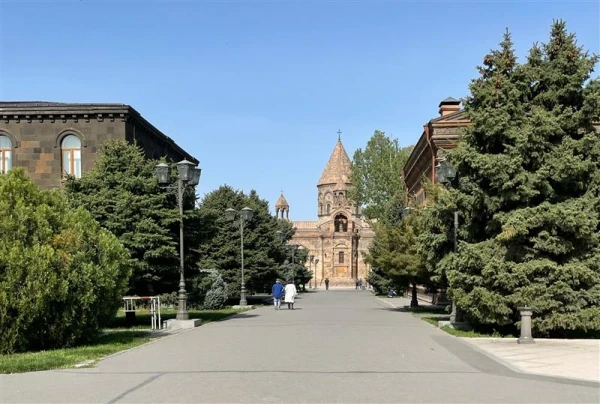
Future of the project
Schreiber shared with CNA that analysis of data collected at the site will play an important role in future archaeological measurements.
“The interaction of excavation results, geophysical prospecting and scientific investigations (natural sciences) will keep us busy in the coming year. However, we are confident that these measurements will provide us with a very complete picture of this extraordinary and important find,” Schreiber said.
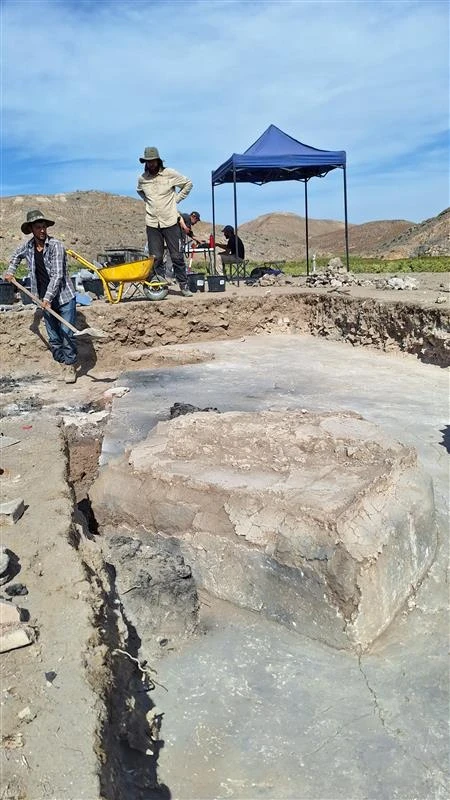
The research team from the University of Münster and the Armenian Academy of Sciences has been working at the Artaxata site since 2018 and has also made other notable discoveries, including an unfinished Roman aqueduct, a Hellenistic sanctuary and the remains of a Urartian settlement , according to Lichtenberger.
The team of researchers also includes 10 students from the German university, along with several internal and external specialists who consulted with the team on different groups of materials at the site, including animal and human bones, plants or “archaeobotanical” matter, marble , plaster, ceramics and tiles — “of which we found a lot,” Lichtenberger said.
“We will continue the work of the Armenian-German Artaxata Project in the future,” he concluded.
Translated and adapted by the ACI Prensa team. Originally published in CNA.

